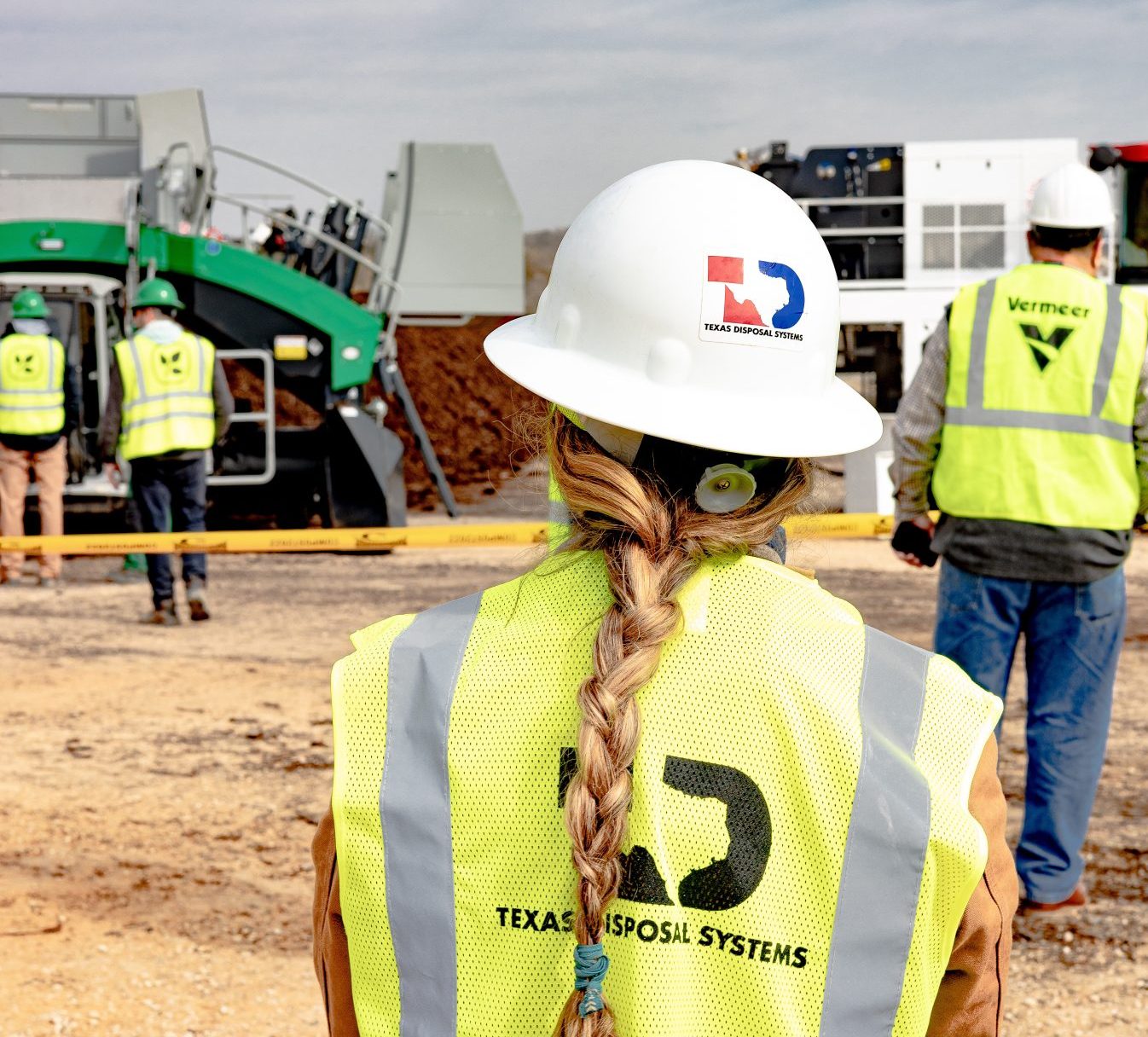Texas’ population is projected to double in the next 30 years, growing to more than 54 million residents.
Those extra people need infrastructure. They need roofs over their heads; offices where they can work; stores, restaurants and community centers where they can shop and socialize.
To put it simply, Texas is going to need a lot of additional construction to keep up with the demands of a fast-growing population. And, if things stay status quo when it comes to construction sites, there will also be a larger need for waste processing.
Construction waste accounts for one-third of all the waste created in the US in a given year. Managing that amount of waste on a construction site can be a full-time job on its own.
We have good news, though.
With some proactive measures and collaborative partnerships, you can reduce the waste generated on your sites, leading to greater efficiency and sustainability for your projects. We’ve put together some tips to better manage your waste processing and reduce waste.
1. Create a designated waste area on your job site.
An easy enhancement to your waste processing efforts can be creating a dedicated waste area on your job site. All waste can be moved to this zone during the project; then a crew member can sort through items to ensure nothing ends up in the waste pile that could be used elsewhere.
Wood waste, for example, makes up about 9 percent of the waste on an average construction site. Wood, however, doesn’t typically need to end up in a landfill. Instead, it can be re-used if appropriate, grounded and recycled/repurposed, or it can be donated to philanthropic building efforts.
Sorting waste on the job site means you’ll be able to handle it more efficiently. Instead of sending all your waste to the landfill, you’ll be able to use more of it on your projects or recycle it at a savings to both your project and the environment. For example, some waste processing companies will actually purchase your scrap metal at competitive rates, giving you an added incentive to sort and separate during your project.
2. Pick the right vendors.
While managing waste on your job site is important, you don’t want it to take up valuable time and effort that could be used elsewhere.
Your top goal with your waste processing is probably to have it out of sight, out of mind. When you choose the right waste processing partner, they’ll have experience working with others whose job sites are similar.
They’ll bring knowledge and expertise to guide your processes, so you can spend less money on landfill fees and figure out the best, most efficient (time and resource-wise) ways to manage your waste.
The best vendor partners should:
- Offer both dumpster and recycling services
- Be familiar with local guidelines and LEED certification guidelines
- Offer proactive ideas and solutions, and a customized plan of action, showing their expertise rather than making you guess what you need
3. Determine whether demolition is necessary.
If you’re renovating or building on an existing site, demolition may seem like a logical and practical step to stick to your timelines. However, if you consider other options, you can greatly reduce the amount of waste created on your site (which then can reduce the amount going into landfill and your overall waste processing expenses).
More than 90 percent of construction waste is generated in the demolition process. If you take time to evaluate your site and to remove items that may be useful, rather than turning it all into landfill debris, you may be able to save additional money by reusing items. Some of the most common reusable items include:
- Soil that can be used as stabilizer
- Untreated wood that can be re-used or ground down
- Asphalt pavement that can be reformed or recycled
- Concrete that can be ground into backfill or used to create new products
In addition to the financial savings that come from reusing materials, your re-use efforts can also earn green points that may be required for LEED certification or by local building ordinances and can reduce greenhouse gas emissions for better sustainability efforts.
Evaluate the time and money savings you could garner by dismantling valuable items prior to, or instead of, completing demolition work.
4. Buy the right products.
When you buy the right products, you’re able to waste less on guesswork or poor-quality items. And, when you choose a product that’s made from recycled items, you’re also contributing to greater sustainability.
For example, Precast Pole Base® can be created to exact contractor specifications and depending on use, the mix can utilize recycled concrete and glass . This increases precision and reduces waste on the job site, as well as helping to position building projects for LEED certification.
You might even find very simple ways to save, like buying in bulk for frequently used items. You may save money, and you’ll definitely reduce the amount of cardboard and packaging that makes its way onto your job site.
5. Work through the waste hierarchy.
Time is money on your construction site. However, money is also money – and you can be more efficient with your budget if you use every resource on your job site as wisely as possible.
Your goal should be to manage materials in the following priority; if you’re able to follow this hierarchy, you can potentially shrink expenses at each step.
- Purchasing the right amount of supplies and equipment at the beginning of a project means less overages and less money spent on good materials that go to waste.
- Think outside the box on ways to re-use materials from previous projects, whether that means using on-site dirt or aggregate for backfill, or buying recycled materials for your projects.
- Concrete is one of the largest contributors to landfills from construction/demolition projects (about 50 percent of the total waste). Other big contributors include wood debris and green waste. Much of this waste can be recycled – concrete and other rock-based materials into aggregate and pea gravel for other projects; wood and brush into new wood products or into compost.
- Disposal should be your last option, and even then, you may be able to find ways to handle disposal in a more sustainable way.
One of the wisest things you can do in your construction projects is to build based on standard dimensions. It means less waste and less time spent on cutting, trimming and piecing things together.
With construction waste set to double by 2025, it’s imperative that we find ways to work together and to manage waste processing in ways that make sense for your construction budgets and for the environment.
If you’re getting ready to start a new construction project, let us be your partner from the start. Our TDS team can provide you the knowledgeable support you need to make sure you’re making the most of your construction resources and building projects that leave a positive long-term impact.



